 Chinese Workers The Chinese posing in front of Sampson's factory, some standing, some sitting, some hatted, some not, most wearing loose pants and simple jackets all with "tight-lipped, unyielding expressions." |
 Shoemakers The Chinese in New England - The Work Shop Original Source: Harper's Weekly, July 23, 1870, page 468 (New York Public Library Digital Gallery - from a sketch by Theodore R. Davis) The interior of Sampson's shoe factory in North Adams, Massachusetts showing Chinese immigrants fastening soles onto shoes. |
|
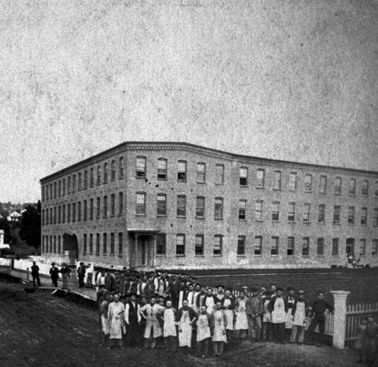 Chinese Outside North Adams Factory The Chinese workers adjusted to their new working environment. |
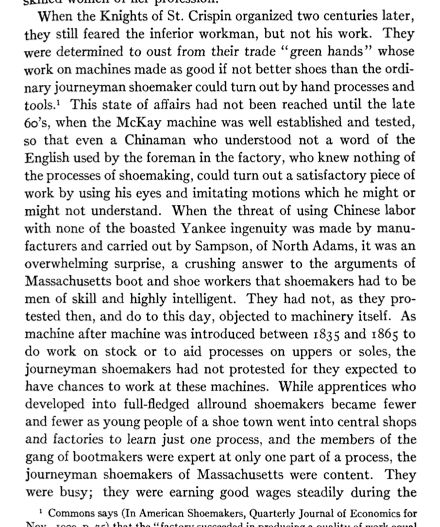
Knights of St. Crispin - Background The basis for the complaint of union workers. |
|
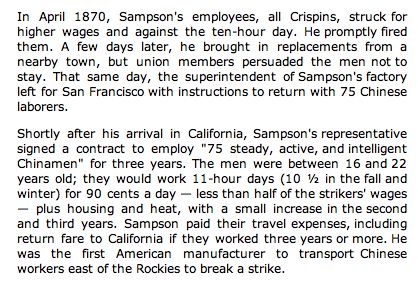 Crispin Strike, 1870 - North Adams, Massachusetts In April 1870, employees of C.T. Sampson's shoe factory, all Crispins, struck for higher wages and against the ten-hour day. He promptly fired them. A Few days later, he brought in replacements from a nearby town, but union members persuaded the men not to stay. Sampson's solution was to send his superintendent to San Francisco with instructions to return with 75 Chinese laborers. |
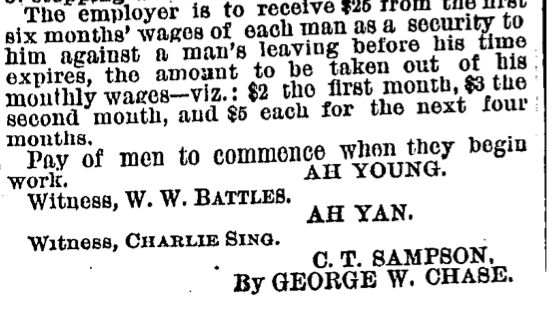
Chinese contract Online Source: Women in History, Lakewood Public Library, Ohio Sampson's representative signed a contract to employ "75 steady, active, and intelligent Chinamen" for three years. The men were between 16 and 22 years old; they would work 11-hour days (10-1/2 in the fall and winter) for 90 cents a day - less than half of the strikers' wages - plus housing and heat, with a small increase in the second and third years. Sampson paid their travel expenses, including return fare to California if they worked three years or more. He was the first American manufacturer to transport Chinese workers east of the Rockies to break a strike. Charlie Sing, a Chinese man who spoke English acted as translator for the workers. |
|
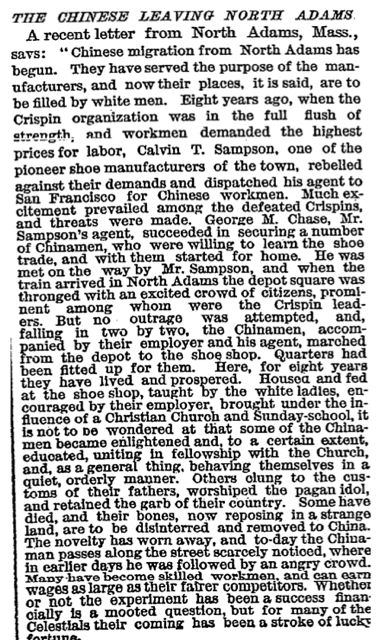 1880 - Chinese Shoemakers Leave A recent letter from North Adams, Mass., says: "Chinese migration from North Adams has begun. They have served the purpose of the manufacturers, and now their places, it is said, are to be filled by white men. Eight years ago, when the Crispin organization was in the full flush of strength, and workmen demanded the highest prices for labor, Calvin T. Sampson, one of the pioneer shoe manufacturers of the town, rebelled against their demands and dispatched his agent to San Francisco for Chinese workmen." |
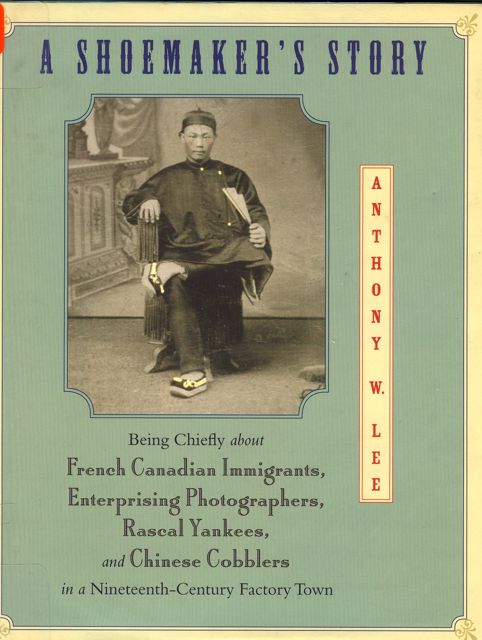 A Shoemaker's Story: Being Chiefly About French Canadian Immigrants, Enterprising Photographers, Rascal Yankees, and Chinese Cobblers in a Nineteenth-Century Factory Town by Anthony W. Lee. Princeton: Princeton University Press, 2008. (303 pages) In 1870 Calvin T. Sampson a North Adams, Massachusetts shoe manufacturer brought 75 Chinese workers from California to break a strike called by the Knights of St. Crispin at his shoe factory. The incident sparked widespread working-class protest across the country, shaped legislative debate in Congress, and helped make Chinese immigration a sustained national issue. Twelve years later, the United States passed the Chinese Exclusion Act, barring most Chinese immigrants from entering the country. The Chinese Exclusion Act was the first major anti-immigration law in American history. The chapters focus on "What the Shoe Manufacturer Saw," "What the Photographers Saw," "What the Crispins Saw," and "What the Chinese Saw." |
|
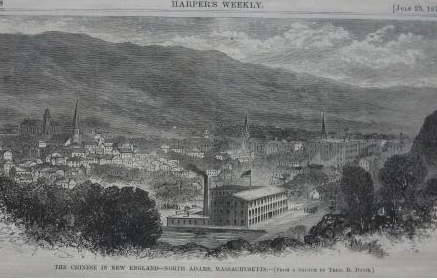 Scene of the North Adams factory |
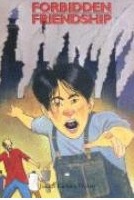
Forbidden Friendship by Judith Eichler Weber Forbidden Friendship by Judith Eichler Weber, is set in the 1870's, in North Adams, MA. It is in an unsettling time in which union workers at a shoe factory go on strike, and the owner of the factory replaces them with Chinese workers from California. Young Molly Bartlett, the shoe factory owner's daughter, is caught between her family and her new friendship with Chen Li, the son of Chinese immigrants brought over to break the ongoing strike. |
|
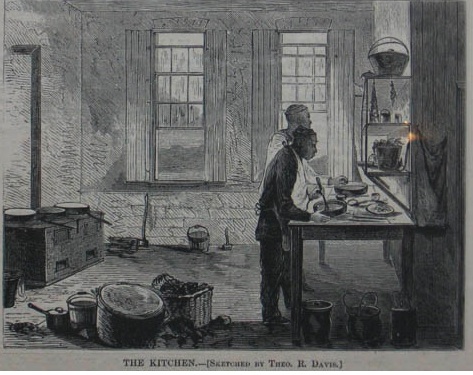 Chinese Kitchen Area |

Chinese Dormitory Area |
|